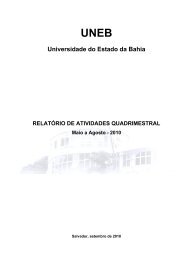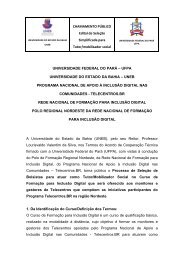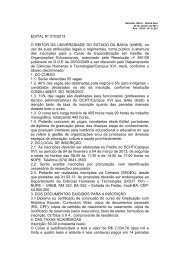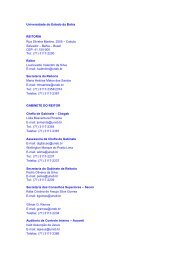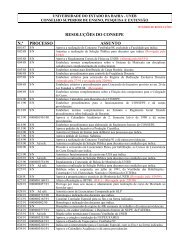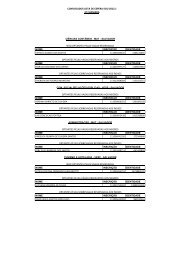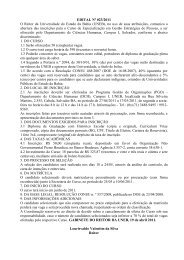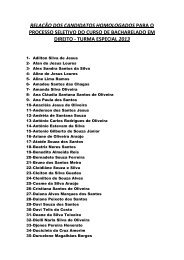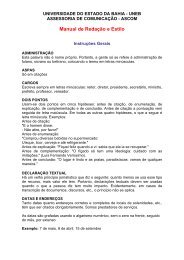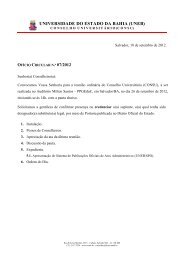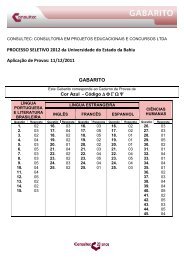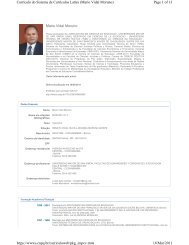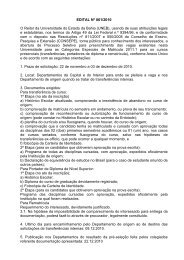Revista da FAEEBA Educação e Contemporaneidade - Uneb
Revista da FAEEBA Educação e Contemporaneidade - Uneb
Revista da FAEEBA Educação e Contemporaneidade - Uneb
You also want an ePaper? Increase the reach of your titles
YUMPU automatically turns print PDFs into web optimized ePapers that Google loves.
In search of América: latina/os (re)constructing the U.S.A.<br />
rican and Puerto Rican working class counterparts.<br />
These early Cuban immigrants were able<br />
to parlay their many advantages in to economic<br />
and political strength, benefiting later immigrants<br />
and revitalizing Miami in the process.<br />
By 1970, these three groups collectively<br />
comprised five percent of the U.S. population.<br />
Mexican Americans, the overwhelming majority,<br />
remained concentrated in the Southwest<br />
(with a growing number making their way to<br />
the Midwest), Puerto Ricans in the New York<br />
City region, and Cubans in the Miami area. In<br />
the three decades since, Latina/os have dispersed<br />
far beyond their traditional places of settlement,<br />
and their numbers have almost tripled as<br />
a consequence of increased (im)migration 6 and<br />
the higher birth rates of this relatively younger<br />
population. As of 2004, Hispanics 7 comprised<br />
13.5 percent of the U.S. population and numbered<br />
39.9 million (NEW YORK TIMES, 2004).<br />
There are more Hispanics in the U.S. to<strong>da</strong>y than<br />
are Peruvians, Chileans, or Canadians in their<br />
respective countries. Mexican Americans, numbering<br />
20.6 million, continue to constitute the<br />
majority group, approximately 60 percent. Puerto<br />
Ricans on the mainland (roughly half of all<br />
Puerto Ricans) now number 3.4 million, and<br />
Cuban Americans 1.2 million. Other Latin<br />
Americans seeking economic opportunity or<br />
political refuge further swell the ranks of the<br />
Latina/o population. These include Dominicans<br />
(2.2 million), various Central American populations<br />
(4.8 million), and 3.8 million South Americans<br />
(INFOPLEASE, 2004), including possibly<br />
up to one million Brazilians (BALLVE, 2003).<br />
The tremendous diversity within the Latina/<br />
o population is oftentimes obscured by the use<br />
of the umbrella term “Hispanic” in the media,<br />
or by the demographic dominance of Mexican<br />
Americans. The opportunity to be seen as being<br />
from one’s particular country of origin can depend<br />
upon where one lives in the USA. As Davis<br />
(2001, p.20) points out, in Los Angeles<br />
“Salvadoreans, Guatemalans and Ecuadoreans<br />
– as well as indigenous immigrants like Zapotecs,<br />
Yaquís, Kanjobals and Mixtecs – struggle<br />
to defend their distinctive identities within a hegemonically<br />
Mexican/Chicano popular culture.”<br />
242<br />
In New York City, meanwhile, the dominant<br />
Hispanic population is no longer Puerto Rican.<br />
Dominicans are catching up to Puerto Ricans<br />
numerically, and Mexican immigrant communities<br />
are on the rise. These demographic shifts<br />
in turn make intercultural exchanges more likely.<br />
Fully half of the Spanish-surname marriages<br />
in New York City are intermarriages between<br />
people of different Hispanic backgrounds, in contrast<br />
to Los Angeles, for instance, where only<br />
14 percent of married people of Mexican origin<br />
married non-Mexican origin Hispanics (see<br />
DAVIS, 2001, p.22). This variability underlines<br />
the point that Latina/os fail to fit any one mold;<br />
they bring differing cultures and histories to the<br />
U.S., and live different realities depending on a<br />
myriad of factors from time of arrival to race to<br />
generation to class to place of settlement. However,<br />
despite such variability, there are similarities<br />
in their experiences that situate them<br />
largely outside the so-called American “Melting<br />
Pot.”<br />
The American Melting Pot: Mobility<br />
or Marginality<br />
America is God’s Crucible, the great Melting-<br />
Pot where all the races of Europe are melting and<br />
re-forming! A fig for your feuds and vendettas<br />
(…) into the Crucible with you all! (Israel Zangwill,<br />
The Melting Pot, 1909, p.37)<br />
Like other people of color 8 , the U.S. Latina/o<br />
population set roots in a nation built upon<br />
profound racial inequalities. The nation’s founders<br />
from the outset sought to limit eligibility for<br />
citizenship. Only white propertied males acqui-<br />
6 The term connotes both immigration and the Puerto Rican<br />
migration (as U.S. citizens).<br />
7 The U.S. Census uses the term “Hispanic” and does not<br />
count Brazilians among them.<br />
8 “People of color” is a term used currently in the U.S. to<br />
refer to non-whites, to reference their collective experiences<br />
of discrimination historically and their commonalities. It<br />
differs from the term “colored people,” which was used<br />
along with “Negro” to refer to African Americans up until<br />
the 1950s and was replaced with the terms “Black” or<br />
“African American.”<br />
<strong>Revista</strong> <strong>da</strong> <strong>FAEEBA</strong> – <strong>Educação</strong> e Contemporanei<strong>da</strong>de, Salvador, v. 15, n. 25, p. 239-257, jan./jun., 2006



